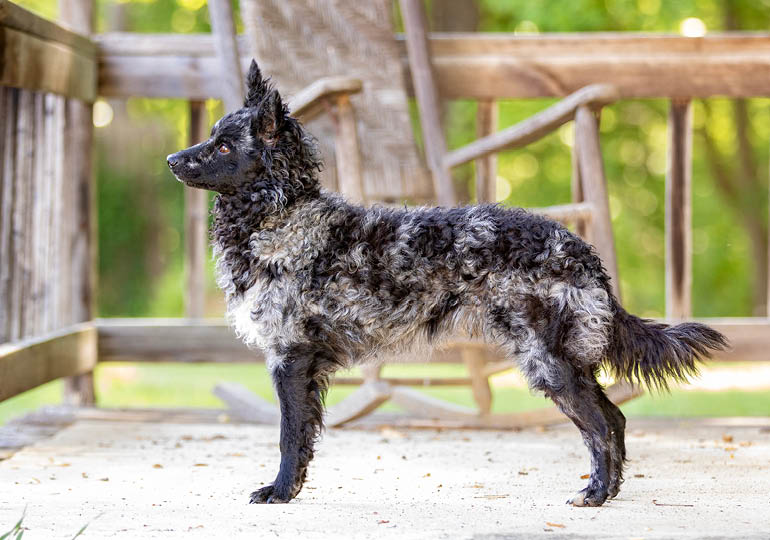Breeds
Mudi

History:
The breed came into being during the 18th to the 19th century from cross breeding Hungarian herding dogs most probably with various prick eared German herding dogs.
General Appearance:
Medium sized herding dog with a wedge-shaped head. Prick ears. Body topline is distinctly sloping towards the rear. The head and the limbs are covered by short, smooth coat. The other parts of the body have a somewhat longer, very wavy to slightly curly coat. There are different variations of colour.
IMPORTANT PROPORTIONS:
• The body length is approximately equal to the height at the withers.
• The depth of the brisket is slightly less than half of the height at the withers.
• The length of the muzzle is slightly less than half of the total length of the head.
Colours
- Fawn.
• Black.
• Blue-merle, i.e. black speckled, estriped, -brindle or -spotted on lighter or darker bluish-grey primary colour.
• Ash coloured (blue grey).
• Brown.
Only slightly extensive white markings are tolerated but not desired. A white patch on the chest, less than 5 cm in diameter, and small white markings on the toes are tolerated but not desired.
• White
Temperament:
The Mudi is extremely able to learn, of lively temperament, courageous, watchful, keen to work, alert and adaptable
Sizes:
Height at withers:
Dogs: 41 – 47 cm; Ideal height 43 – 45 cm
Bitches: 38 – 44 cm; Ideal height 40 – 42 cm.
Weight:
Dogs: 11 – 13 kg.
Bitches: 8 – 11 kg.
In Conclusion
Now you know a little about the Mudi you may have think that this is the dog for you. Before you make a decision, please make contact with the breed club or your State controlling body for purebred dogs. They will be able to give you information about available puppies and also suggest dog shows where you can see the breed and speak to breeders. In this way you will gain a better perspective of the Mudi and its needs and whether this breed would suit your lifestyle.
References


